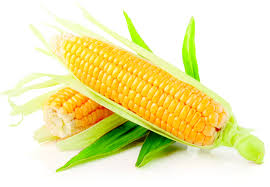
Introduction
Sweetcorn is delicious eaten fresh and there are some new selections that are easier to grow in the UK. Mini sweetcorn is a good choice if you haven’t grown your own sweetcorn before as, unlike the large sweetcorn, it doesn’t need to be grown in blocks and you should get five or six cobs from each plant. The plants also make a useful windbreak.
Seeding
Sweetcorn is most successful in long hot summers, though many modern cultivars are better suited to cooler climates.
‘Supersweet’ cultivars are much sweeter than older varieties and retain their sweetness for longer; however, they are less vigorous. ‘Extra tender sweet’ corn is a less chewy form of ‘supersweet’ ideal for growing in the garden. Do not grow Supersweet cultivars close to other cultivars, as cross-pollination reduces the sweetness.
Sow indoors at 18-21°C (65-70°F) from mid-April to early May in modules or deep pots at a depth of 2.5cm (1in). Use early, mid season and late varieties to extend the cropping season. Sow 2-3 seeds per pot and thin to leave the strongest seedling.
Sow outdoors in late spring – sweetcorn does not germinate when soil or compost temperatures are below 10°C.
Growing
As the plants are wind pollinated they should be grown in blocks rather than rows, 45cm (18in) apart. Conversely, there are some mini sweetcorn cultivars which are harvested before fertilisation, and so don’t need to be grown in a block and can even be grown as a windbreak.
Grow sweetcorn in a sheltered, sunny position, protected from strong wind, on any fertile garden soil. Add up to two bucketfuls of organic matter, such as rotted manure, and also rake in 100g per sq m (4oz per sq yd) of Growmore before planting. Plants are less successful on dry or heavy soil.
Mulch with organic matter, to conserve moisture and suppress weeds and mound soil over the roots, which appear at the base of the stems. Hoe carefully as they are shallow rooted.
Stake plants individually if they are tall or the location is exposed. Water well in dry weather; this is vital when the plants are flowering. Tap the tops of the plants when the male flowers (tassels) open to help pollination; poor pollination results in sparsely filled cobs. Liquid feed when the cobs begin to swell.
Troubleshooting Growing Problems
Mice: These rodents will eat the seeds where planted
Remedy: Place traps around the area where seeds are sown.
Birds: Birds, especially pigeons, can cause an array of problems including eating seedlings, buds, leaves, fruit and vegetables.
Remedy: Protect the plants from birds by covering them with netting or fleece. Scarecrows and bird-scaring mechanisms work for a while, but the most reliable method of protection is to cover plants with horticultural fleece or mesh.
Slugs and snails: These feed on the young seedlings and you’ll see the tell tale slime trail on the soil around your crop, as well as on the leaves.
Remedy: There are many ways to control slugs and snails, including beer traps, sawdust or eggshell barriers, copper tape and biocontrols.
Harvesting
Test for ripeness when the tassels have turned chocolate brown – squeeze a grain between thumbnail and fingernail; if a watery liquid squirts out, it is unripe; if it is creamy, the cob is ready; if paste-like it is over-mature. Twist ripe cobs from the stem. They rapidly lose their flavour so have a pan of boiling water ready before you harvest, ready to plunge them in.
Companion Planting
Plant with: beans, cucumbers, melons, parsley, peas, potatoes, pumpkin, squash, white geranium
Recipes

Leave a Reply
You must be logged in to post a comment.